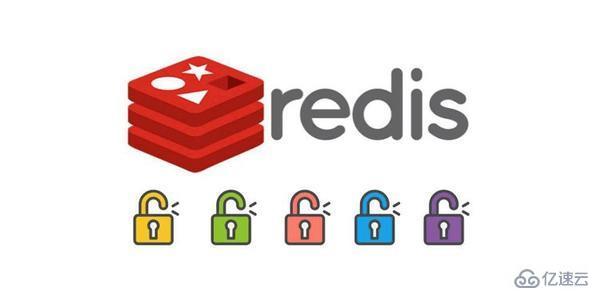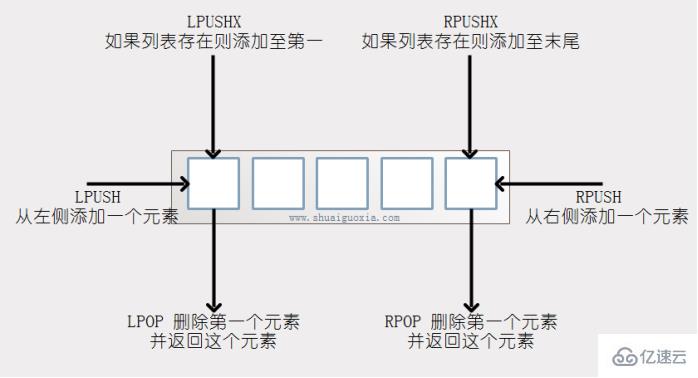What are the introductory knowledge points of redis?
Redis is a high-performance key-value database. The emergence of redis has largely compensated for the shortcomings of keyvalue storage such as memcached, and can play a very good supplementary role to relational databases in some situations.

1. Install Redis
Redis configuration file:/etc/redis.conf
Redis main program:/usr/bin/ redis-server
Client tool:/usr/bin/redis-cli
Default listening port: 6379
Data directory:/var/lib/redis
Service script:/usr/lib/systemd/system/redis.service
yum install redis # 基于CentOS7的epel源
2. Connect to Redis
The client command tool of Redis is redis-cli, which connects to the local one by default Redis service.
If you need remote connection, use redis-cli -h HOST -p PORT -a PASSWD
[root@cache1 ~]# redis-cli127.0.0.1:6379> ping # 使用ping命令测试与服务的连接性PONG # 服务端回复pong则说明网络连接没有问题
3. Redis data type
String (string)
String is the most basic type of redis. You can understand it as the same type as Memcached. One key corresponds to one value.
The string type is binary safe. This means that the redis string can contain any data. For example, jpg images or serialized objects.
The string type is the most basic data type of Redis, and a key can store up to 512MB.
Hash (Hash)
Redis hash is a collection of key-value (key=>value) pairs.
Redis hash is a mapping table of string type fields and values. Hash is particularly suitable for storing objects.
List (List)
Redis list is a simple list of strings, sorted in insertion order. You can add an element to the head (left) or tail (right) of the list.
Set (set)
Redis’ Set is an unordered collection of string type.
Sets are implemented through hash tables, so the complexity of adding, deleting, and searching is O(1).
zset (sorted set: ordered set)
Redis zset, like set, is also a collection of string type elements, and duplicate members are not allowed.
The difference is that each element is associated with a double type score. Redis uses scores to sort the members of the collection from small to large.
The members of zset are unique, but the scores can be repeated.
4. Get help
help @ + 双击tab # 双击tab会出现各种子命令的帮助help @string # 字符串相关的配置help @list # 列表相关的配置;列表类似于数组help @sethelp @hash......
5. List-related commands
The other data types are relatively simple, and you can get the usage of the commands through help. The easiest way is Baidu. In order to better understand some operations, we will explain the most commonly used commands related to List separately, because it may not be easy to understand just by looking at the help
Example:
127.0.0.1:6379> LPUSH stu aubin # LPUSH,向列表左侧添加元素,列表不存在自动创建(integer) 1 127.0.0.1:6379> RPUSH stu 22 # RPUSH,向列表右侧添加元素,列表不存在则自动创建(integer) 2 127.0.0.1:6379> RPUSHX stu nan # RPUSHX,如果列表存在则右侧添加元素(integer) 3 127.0.0.1:6379> LPUSHX stu linux # LPUSHX,如果列表存在则左侧添加元素(integer) 4 127.0.0.1:6379> LRANGE stu 0 10 # LRANGE,显示名为stu的列表的0-10个值1) "aubin"2) "22"3) "nan"4) "linux"LPOP stu # 左弹,删除名为stu列表中的第一个元素RPOP stu # 右弹,删除名为stu列表中的最后一个元素LREM stu 3 aubin # 从头到尾删除3个值为aubin的元素LREM stu -3 aubin # 从尾到头删除3个值为aubin的元素LREM stu 0 aubin # 删除所有值为aubin的元素
The above is the detailed content of What are the introductory knowledge points of redis?. For more information, please follow other related articles on the PHP Chinese website!

Hot AI Tools

Undresser.AI Undress
AI-powered app for creating realistic nude photos

AI Clothes Remover
Online AI tool for removing clothes from photos.

Undress AI Tool
Undress images for free

Clothoff.io
AI clothes remover

AI Hentai Generator
Generate AI Hentai for free.

Hot Article

Hot Tools

Notepad++7.3.1
Easy-to-use and free code editor

SublimeText3 Chinese version
Chinese version, very easy to use

Zend Studio 13.0.1
Powerful PHP integrated development environment

Dreamweaver CS6
Visual web development tools

SublimeText3 Mac version
God-level code editing software (SublimeText3)

Hot Topics
 1378
1378
 52
52
 How to build the redis cluster mode
Apr 10, 2025 pm 10:15 PM
How to build the redis cluster mode
Apr 10, 2025 pm 10:15 PM
Redis cluster mode deploys Redis instances to multiple servers through sharding, improving scalability and availability. The construction steps are as follows: Create odd Redis instances with different ports; Create 3 sentinel instances, monitor Redis instances and failover; configure sentinel configuration files, add monitoring Redis instance information and failover settings; configure Redis instance configuration files, enable cluster mode and specify the cluster information file path; create nodes.conf file, containing information of each Redis instance; start the cluster, execute the create command to create a cluster and specify the number of replicas; log in to the cluster to execute the CLUSTER INFO command to verify the cluster status; make
 How to use the redis command
Apr 10, 2025 pm 08:45 PM
How to use the redis command
Apr 10, 2025 pm 08:45 PM
Using the Redis directive requires the following steps: Open the Redis client. Enter the command (verb key value). Provides the required parameters (varies from instruction to instruction). Press Enter to execute the command. Redis returns a response indicating the result of the operation (usually OK or -ERR).
 How to start the server with redis
Apr 10, 2025 pm 08:12 PM
How to start the server with redis
Apr 10, 2025 pm 08:12 PM
The steps to start a Redis server include: Install Redis according to the operating system. Start the Redis service via redis-server (Linux/macOS) or redis-server.exe (Windows). Use the redis-cli ping (Linux/macOS) or redis-cli.exe ping (Windows) command to check the service status. Use a Redis client, such as redis-cli, Python, or Node.js, to access the server.
 How to use redis lock
Apr 10, 2025 pm 08:39 PM
How to use redis lock
Apr 10, 2025 pm 08:39 PM
Using Redis to lock operations requires obtaining the lock through the SETNX command, and then using the EXPIRE command to set the expiration time. The specific steps are: (1) Use the SETNX command to try to set a key-value pair; (2) Use the EXPIRE command to set the expiration time for the lock; (3) Use the DEL command to delete the lock when the lock is no longer needed.
 How to clear redis data
Apr 10, 2025 pm 10:06 PM
How to clear redis data
Apr 10, 2025 pm 10:06 PM
How to clear Redis data: Use the FLUSHALL command to clear all key values. Use the FLUSHDB command to clear the key value of the currently selected database. Use SELECT to switch databases, and then use FLUSHDB to clear multiple databases. Use the DEL command to delete a specific key. Use the redis-cli tool to clear the data.
 How to implement the underlying redis
Apr 10, 2025 pm 07:21 PM
How to implement the underlying redis
Apr 10, 2025 pm 07:21 PM
Redis uses hash tables to store data and supports data structures such as strings, lists, hash tables, collections and ordered collections. Redis persists data through snapshots (RDB) and append write-only (AOF) mechanisms. Redis uses master-slave replication to improve data availability. Redis uses a single-threaded event loop to handle connections and commands to ensure data atomicity and consistency. Redis sets the expiration time for the key and uses the lazy delete mechanism to delete the expiration key.
 How to read redis queue
Apr 10, 2025 pm 10:12 PM
How to read redis queue
Apr 10, 2025 pm 10:12 PM
To read a queue from Redis, you need to get the queue name, read the elements using the LPOP command, and process the empty queue. The specific steps are as follows: Get the queue name: name it with the prefix of "queue:" such as "queue:my-queue". Use the LPOP command: Eject the element from the head of the queue and return its value, such as LPOP queue:my-queue. Processing empty queues: If the queue is empty, LPOP returns nil, and you can check whether the queue exists before reading the element.
 How to implement redis counter
Apr 10, 2025 pm 10:21 PM
How to implement redis counter
Apr 10, 2025 pm 10:21 PM
Redis counter is a mechanism that uses Redis key-value pair storage to implement counting operations, including the following steps: creating counter keys, increasing counts, decreasing counts, resetting counts, and obtaining counts. The advantages of Redis counters include fast speed, high concurrency, durability and simplicity and ease of use. It can be used in scenarios such as user access counting, real-time metric tracking, game scores and rankings, and order processing counting.




